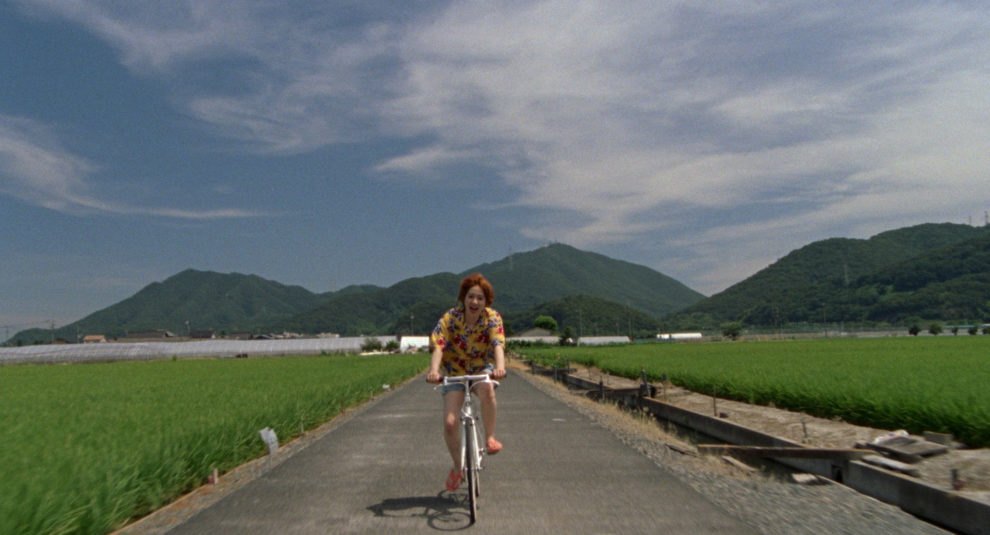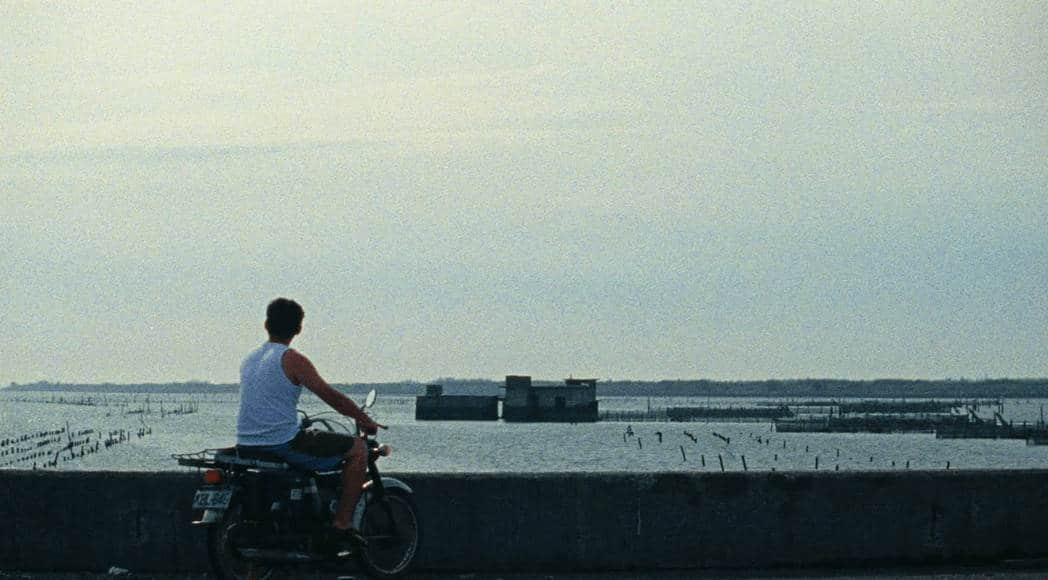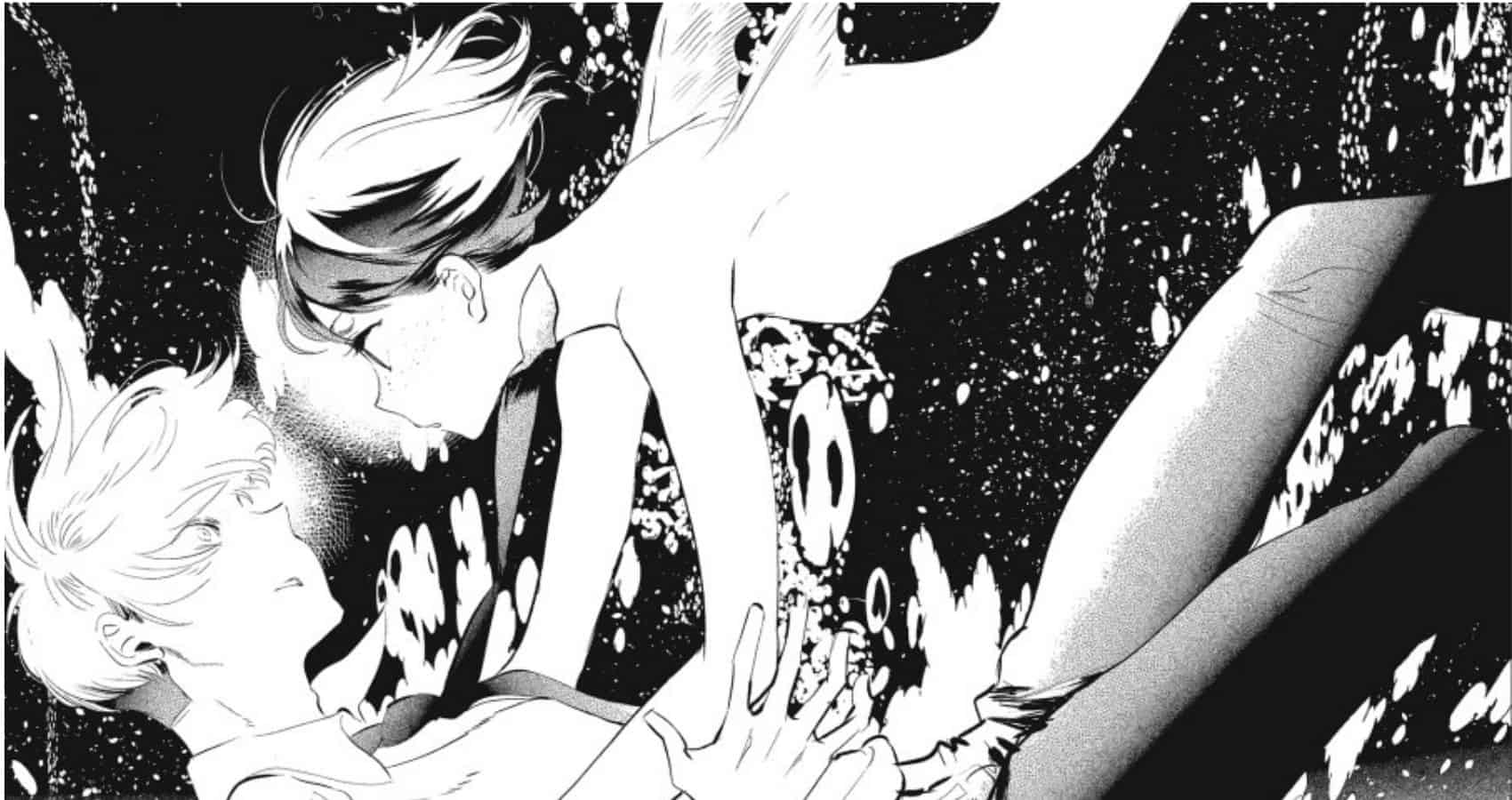Keirin is a form of motor-paced cycle racing in which track cyclists sprint for victory following a speed-controlled start behind a motorized or non-motorized pacer. It was developed in Japan around 1948 for gambling purposes and became an official event at the 2000 Olympics in Sydney, Australia. Tamano is a seaside city located in southern Okayama Prefecture, Japan. It was officially founded on August 3, 1940 and as of October 1, 2016, has an estimated population of 60,101. Tetsuichiro Tsuta brings the two concepts together, in a style that looks at least partially promotional for both, to present three rather differently styled segments in his omnibus, which marks his first feature after 2013 and “The Tale of Iya”.
Tamano Visual Poetry: Nagisa's Bicycle is screening at Camera Japan

The first part, titled “Bicycle Racing” focuses on Oshima, a middle-aged, quite bulky bicycle racer, who is having a midlife crisis since he has to gradually leave the sport but also does not know what to do with his time when he is not training or racing, particularly since he has lost the appetite for drinking, women and gambling. This has led him to frustration, and a series of events that lead him having to take anger management lessons, where a truly annoying man dressed in the most flamboyant way possible, tries his patience.
The segment makes a very interesting comment about the lives of professional athletes after retirement, following, though, a mostly humoristic approach, deriving from the interactions of the huge Oshima with various people. The ending message is one of hope, concluding the part nicely, while the presentation of the sport is quite thorough here, benefitting the most by the cinematography, which captures it in all its glory during the finale.
The second, and arguably the best in the omnibus bit is titled “Seaside Bicycle” and deals with Nagisa, a female fisherman in her thirties, who goes out to sea every day, but also feels jealous of the people riding their bikes on the shore. One day, she finds a bicycle washed up on the beach, and gets utterly attached to it, riding it all over town, including the racing field where she also stumbles upon a goat. What follows is quite dramatic, but the sci-fi ending again concludes the part in a positive note.
The almost dialogue-less approach here benefits the movie the most, as it allows for the excellent camera work to shine, with the long-shots in particular being a wonder to watch, while also promoting the beauties of the area. The slightly surrealistic premises, that find their apogee in the last part, are also well-embedded, with the SFX of the finale giving the most impressive scene in the movie. The comment about (familial) duty and what people actually want is well presented, concluding a truly great part.
The third one is titled “Ice and Oil”, and revolves around a romantic triangle (or guadrungle one could say). Sunako and Hiroshi, who grew up in Tamano City, are working together in a shipyard, with the former having a rather one-sided crush on the latter, who truly has no idea about her feelings. Instead, he has a crush on Momo, a beautiful woman who has just moved from Tokyo, which is the reason he eventually leaves his former job in order to work with her at a stylish shaved ice shop. Momo, however, is not keen on a romantic relationship, since she wants to make some friends first, and Sunako, who literally barges on the two one night they are out eating, provides the perfect candidate, along with a man who owns a cafe in the town, to the frustration of Hiroshi.
Probably the weakest of the three, the part focuses on the difficulty of relationships in contemporary Japan, while the “fight” for Tamano among the ones who are living there and the newcomers, evidently ends with the latter winning, in another promotional aspect. The most interesting aspect here is the way it is connected with the first part, where Oshima has ahaving a life changing tasting of shaved ice, and the finale in the races.The presence of a goat also connects it with the second part, in a rather hilarious, easter-egg type conjunction.
Despite the evident promotional premises of “Tamano Visual Poetry: Nagisa's Bicycle”, the three stories are quite easy to watch, due to their permeating lightness and the use of humor throughout, as much as due to the excellent cinematography, deeming the movie one that definitely deserves a watch.
















